It’s funny that, while I’ve written dozens and dozens of radio reviews over the years, I’ve never written even a single review that included an HD radio.
Well, the time to begin is now: HD radio, here we come.
Those readers living outside North America may be scratching their heads, asking, “What exactly is ‘HD radio?’” To answer in clear terms, I’ll turn the question over to Wikipedia:
HD Radio is a trademarked term for iBiquity’s in-band on-channel (IBOC) digital radio technology used by AM and FM radio stations to transmit audio and data by using a digital signal embedded “on-frequency” immediately above and below a station’s standard analog signal, providing the means to listen to the same program in either HD (digital radio with less noise) or as a standard broadcast (analog radio with standard sound quality). The HD format also provides the means for a single radio station to simultaneously broadcast one or more different programs in addition to the program being transmitted on the radio station’s analog channel.
Got that? In brief, HD radio is digital radio broadcasts that occupy the same FM/AM spectrum currently allocated for analog broadcasts. Wikipedia adds:
[HD radio] was selected by the U.S. Federal Communications Commission (FCC) in 2002 as a digital audio broadcasting method for the United States, and is the only digital system approved by the FCC for digital AM/FM broadcasts in the United States.
For my own part I had mostly ignored HD radio, assuming there would be few stations to listen to from my rural home location. That is, until recently, when I purchased a car that has built-in HD radio reception. I was impressed by the number of commercial stations I found that I can receive via HD radio. In truth, only a handful of the mainstream HD station offerings had any appeal for me, but I really took notice when I received a commercial-free jazz station via the HD2 channel of my favorite NPR member station, WFAE. Having been a jazz fan since I studied music in college, I was intrigued: could a portable HD radio receive this distant HD station reliably? I had my doubts; moreover, I really didn’t want to purchase a radio, then be obligated to send it back if it didn’t receive anything.
Instead, I contacted Sangean. The company was more than happy to send me a loaner radio for review. I requested the HDR-16––at the time it was Sangean’s most affordable HD portable, one about which a number of SWLing Post readers had expressed their curiosity.
Overview
The Sangean HDR-16 is a simple radio with a modern design. The chassis is a glossy black hard plastic and feels substantial. It has a useful fold-out carry handle and substantial telescoping whip antenna. The front face features a 16-character two-line backlit display, five function buttons, five dedicated preset buttons, and a dedicated power button. On the right side of the radio you’ll find a dedicated (two function) tuning knob and smaller volume/tone knob. The left side of the radio features an “aux-in” port, a “rec-out” port, an earphone jack, and a 7.5 volt “DC-in” port.
Features
- HD Radio digital and analog AM / FM-Stereo reception
- 10 Memory Presets (5 FM, 5 AM)
- PAD (Program-Associated Data) Service
- Support for Emergency Alerts Function
- Automatic Multicast Re-Configuration
- Automatic Simulcast Re-Configuration
- Auto Ensemble Seek
- Real Time Clock and Date with Alarm and Sleep Function
- 2 Alarm Timer by Radio, Buzzer
- HWS (Humane Wake System) Buzzer and Radio
- Snooze Function
- Tone & Bass Control
- Information Display for Channel Frequency, Call Sign, Radio Text, Audio Mode, Service Mode, Signal Quality and Clock Time
- Easy to Read LCD Display with Backlight
- “Battery Low” LED Indication
- Auxiliary Input for Additional Audio Sources
- Record Output for Connecting to Hi-Fi System or Recording from Audio Program
- I/O Jacks: DC In, Line-Out (Rec-Out), Aux-In, Headphone and HD / FM Rod Antenna
Audio
The HDR-16 sports two 2.5” front-facing speakers that deliver crisp audio that can be customized with simple treble/bass EQ settings. I found increasing the treble just a bit and the bass quite a lot produced the best audio for music broadcasts. Even the default audio settings are pretty good, however. The HDR-16 doesn’t have the rich fidelity of the Eton Field BT or the Tecsun S-8800, but it does offer stereo sound that is room filling and pleasant. Sangean obviously took audio fidelity seriously when designing the HDR-16.
Note that the the HDR-16 sounds especially good in spoken word/news broadcasts.
Operation and Ergonomics
The Sangean HDR-16 is a very simple and intuitive radio to operate. I sorted out all of its functions simply by following button and knob labels, but even the most tech-challenged person in your family could give the owner’s manual a single read-through and operate the HDR-16 with ease.
But let’s get one gripe out of the way…perhaps a case of simplicity gone too far: the HDR-16 only has five station preset buttons. Five! Actually, it offers a total of 10 memory allocations: five for AM, five for FM. Still…even in my rural market, I can easily program ten station memories on an FM radio, especially since HD Radio channels offer that many more new options. But the HDR-16 forces me to curate my presets down to a mere five stations per band. In my view, this strict limitation is an unfortunate design oversight.
Performance
The HDR-16 is an AM/FM radio that receives both legacy analog broadcasts and HD/digital broadcasts on both bands. I’ll break down performance by mode and band below.
HD performance
Digital FM
Of course, what I was most eager to explore was FM HD reception from my home. After unpacking the HDR-16, I placed the radio on my kitchen countertop and initiated an HD Seek scan via the dedicated button on the front panel. Couldn’t have been easier.
The HDR-16’s scan/seek functionality is impressively quick.
I quickly found there were a number of commercial radio stations––about four, to be exact––that I could instantly receive with little to no effort. Mind you, I live in a relatively rural market in a mountainous area. No doubt, if I initiated an HD radio search in LA or New York City, the dial would be chock-full of terrific stations.
All of the HD radio stations I received were either local, or powerhouses from neighboring markets. I was disappointed to find that I could not receive my most desired station, WFAE HD2.
I then moved the HDR-16 to a south-facing window and tuned to WFAE’s FM frequency of 90.7. I found I could easily receive the analog station and its RDS information, but still had no option to listen to HD2. After tinkering with antenna position and placement in our kitchen window, a sweet spot for reception was found, and voila! WFAE HD2 came in fully decoded, without any drops.
Recalling the days when I used to tinker with the rabbit ears on a TV, once I found that sweet spot, I carefully left the HDR-16 alone and didn’t move it further. As a result, over the course of the afternoon, I had nearly 100% copy from WFAE HD2.
I knew WFAE was a fringe station and checked their propagation map for HD radio. My location was actually outside of the fringe reception area. I looked up GPS coordinates of the WFAE 90.7 MHz transmitting site and found it is exactly 101 miles/162 km from my home.
Obviously, the HDR-16 is a sensitive HD radio on FM!
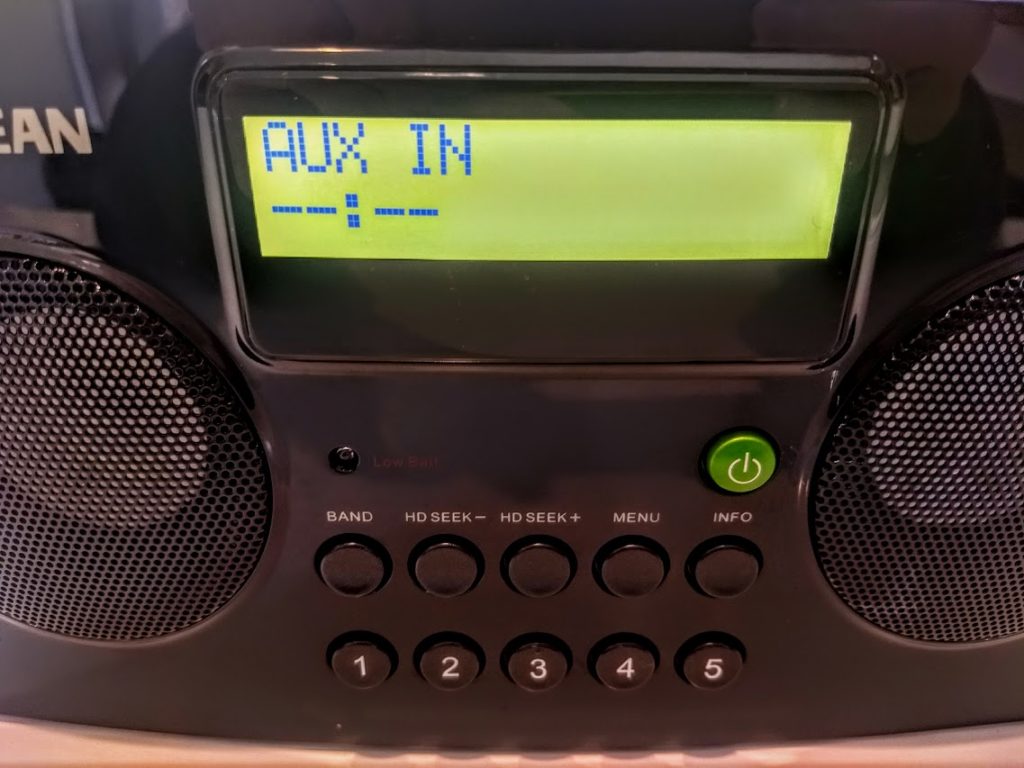
Via the 1/8″ stereo AUX in jack, you can use the HDR-16 as amplified stereo speakers for your favorite portable music device.
Turns out, FM HD reception is pretty flaky when dealing with fringe stations, though.
Over the course of the next weeks, I tried the HDR-16 in different positions and locations. There was only one spot in my house where the HDR-16 could get reliable reception of WFAE HD2. When I started the evaluation, it was August; our trees were still had a canopy full of green leaves. Sangean kindly allowed me to hang onto the HDR-16 to see if reception improved in late fall when all of the leaves were off the trees. As I write this review, we’re in winter, and the tree branches are bare. But curiously, reception of WFAE’s fringe signal is about the same as before. Nor have I noticed any difference in the reception of other commercial stations.
My conclusion is that the HDR-16 is a true performer on the FM band in HD mode. I have no other HD radios with which to compare it, but based on what I know about HD radio, this rig certainly exceeded my expectations.
Digital AM
The HDR-16 can also receive AM HD signals. There are far fewer AM HD broadcasters on the air, however. In fact, one of the first in our region dropped their HD coverage last year due to a lack of listeners.
With that said, I’ve read that a number of HDR-16 owners who live in the vicinity of AM HD broadcasters love the fact they get a digital audio quality signal on the AM band. One SWLing Post reader recently told me he even gets the occasional night-time AM HD DX signal with an HDR-16.
There are no local AM HD stations near me, and despite my best efforts, I never decoded an AM HD broadcaster in the evening. Perhaps if I did a little research and planning, then inductively coupled the HDR-16 to a MW mag-loop antenna, it would increase my chances.
Analog performance
FM
I’ve done almost as much analog FM listening on the HDR-16 as I have HD listening.
The HDR-16 can hold its own with most of my portable radios, in that it can receive all of my benchmark FM stations, and even some fringe analog stations.
RDS decoding also seems to be quite effective, even with fringe stations.
AM
AM (mediumwave) performance is surprisingly good. Perhaps my expectations were low, but I expected analog AM reception to be an afterthought. Or perhaps to have acceptable AM HD reception, Sangean had to put some extra effort into overall AM performance. Honestly, I don’t know, but what I do know is I’ve been pleased with the HDR-16 on the AM band. The AGC is pretty stable, noise relatively low, and sensitivity better than on other similar digital radios.
Many of my shortwave portables, like the PL-660, PL-310ET, and PL-880, could outperform the HDR-16 on the AM band, but frankly performance is on a level that it’s going to please most radio listeners. I’ve even had luck getting solid copy from one of my favorite AM DX stations, CFZM (740 kHz) with the HDR-16.
Should you purchase the HDR-16 for AM/MW DXing? No; there are better radios for this exclusive function. But for what I would consider a “bonus” band on a digital radio, I’m very pleased.
Summary
Every radio has its pros and cons. When I begin a review of a radio, I take notes from the very beginning so that I don’t forget some of my initial impressions. Here’s the list I’ve developed over the time I’ve spent evaluating the HDR-16.
Pros:
- Excellent FM HD radio reception
- Excellent FM analog reception
- Very good AM broadcast band reception for a modern digital portable
- Good audio from internal stereo speakers
- Nice carry handle that tucks away
- Both auxiliary-in and -out jacks for audio
- Dedicated earphone jack
- Design is compact, sleek, yet sturdy
- One of the more affordable HD radio options currently on the market
- Easy access to bass/treble tone controls through volume multi-function
- HD seek functions work on all but the most fringe stations
Cons:
- No ability to internally recharge C batteries
- No external antenna jack to improve FM HD reception with directional antenna
- Limited to just 10 memory presets (five for AM, five for FM)
Fringe HD stations may continuously flip between digital and analog, annoying when HD station content and analog broadcast content are quite differentUpdate: I recently tried to have the receiver replicate this behavior but it did not, so I’m striking it from the cons list!
Conclusion
Can I recommend the HDR-16? Absolutely.
If you’re looking for an AM/FM HD radio that’s well-rounded, simple to operate, and provides quality audio, I don’t believe you could go wrong with the HDR-16. The HDR-16 has proven to me that it’s a worthy FM HD receiver as it’s sensitive enough to snag fringe HD stations with some reliability. I’m certain I could design a small FM antenna and get 100% copy from my favorite HD station 101 miles from my home.
I think the HDR-16 would be a safe purchase for anyone, as it’s easy to operate, relatively compact, and makes the process of seeking HD stations a breeze.
I’m especially pleased with the HDR-16’s AM analog reception. It pleasantly surpassed my expectations and makes it easy to recommend the HDR-16. The HDR-16 is one of the few HD portables that also includes AM HD reception.
If you’re looking for a well-rounded HD and analog portable, grab the HDR-16. If you’re looking for a mediumwave DX machine, go for a benchmark mediumwave radio instead, like a GE Super Radio, C.Crane CC Radio 2E, CC Radio EP Pro or even a “Holy Grail” vintage Panasonic RF-2200.
I’m very tempted to purchase the HDR-16; I’ve found it difficult to justify, though. Living in a rural location, I have fewer HD stations to choose from––all but one are commercial, chock-full of advertising, and lack any real variety and diversity. I am very pleased with WFAE’s jazz station on HD2, but it’s hard to justify a $100 purchase just to receive one station over the air. Especially since I can easily stream WFAE HD2 from my Sangean WFR-28, Como Audio Solo, or Amazon Echo.
But if I lived in an urban area, with the accompanying diverse radio market, I wouldn’t hesitate to buy the HDR-16.
Here are some retail options for the HDR-16––at the time of this writing, almost all retailers price it at $100–Amazon, New Egg and some eBay vendors offer free shipping:
In closing…I should add that there’s another tempting Sangean HD radio coming just around the corner: the HDR-14. It’ll be priced lower than the HDR-16, and is even more compact, suggesting that it might make an excellent portable for the traveler. I will certainly review the HDR-14 when it’s available, as I’ll be very curious if its equally effective at snagging fringe HD FM stations. Note that the HDR-14, unlike the HDR-16, has only one speaker, so I doubt audio fidelity will match that of the HDR-16, which should be a better choice for home and local use.

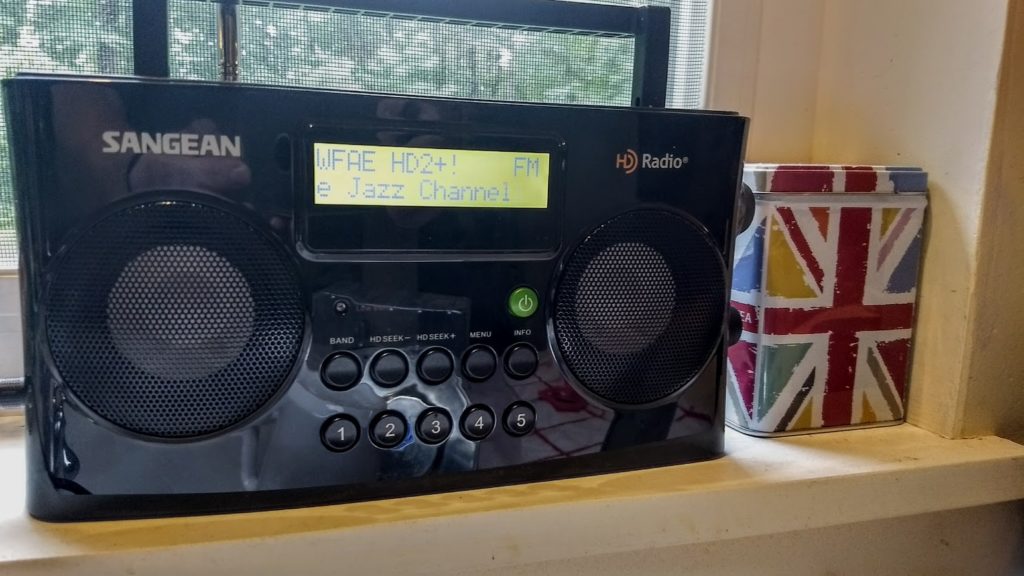
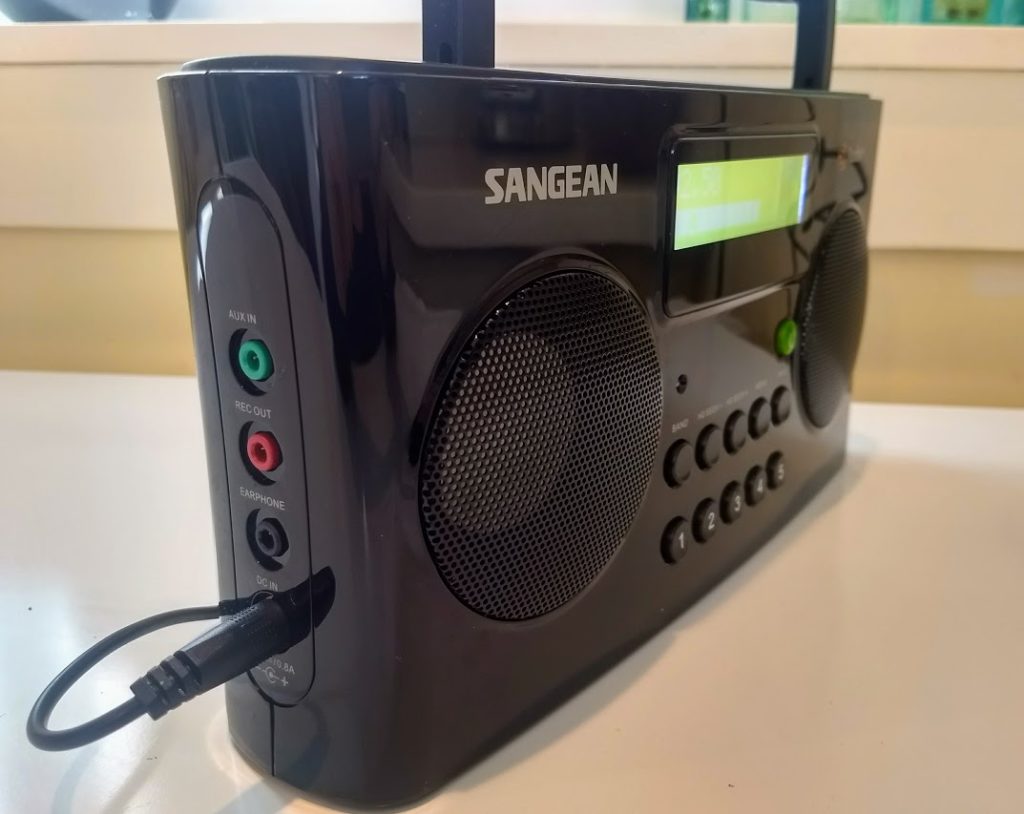
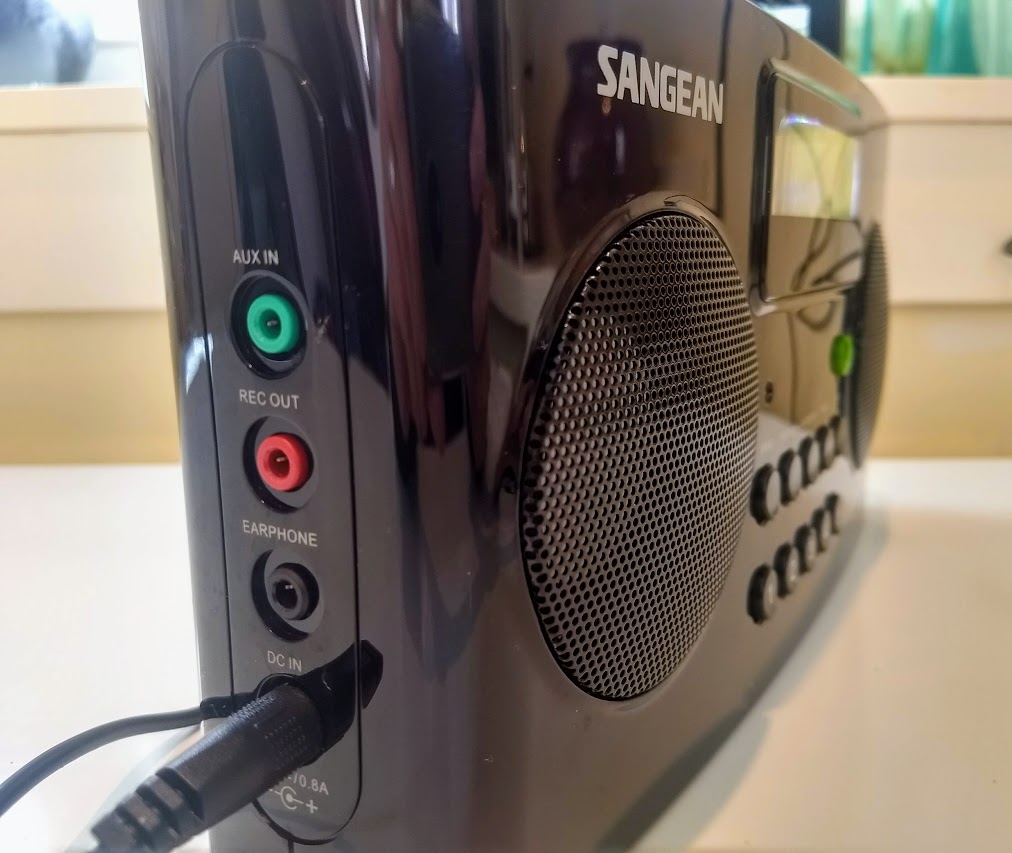
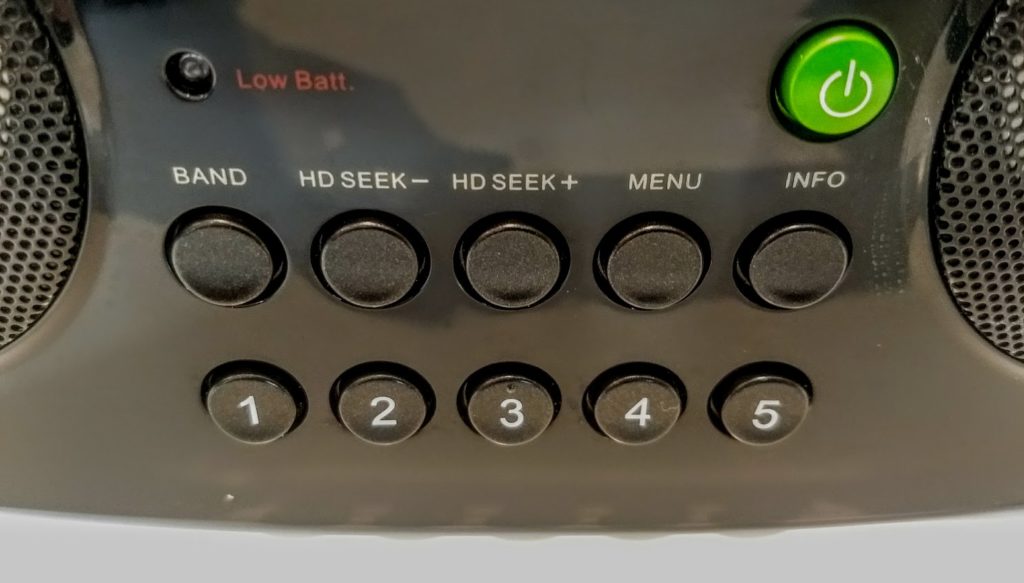
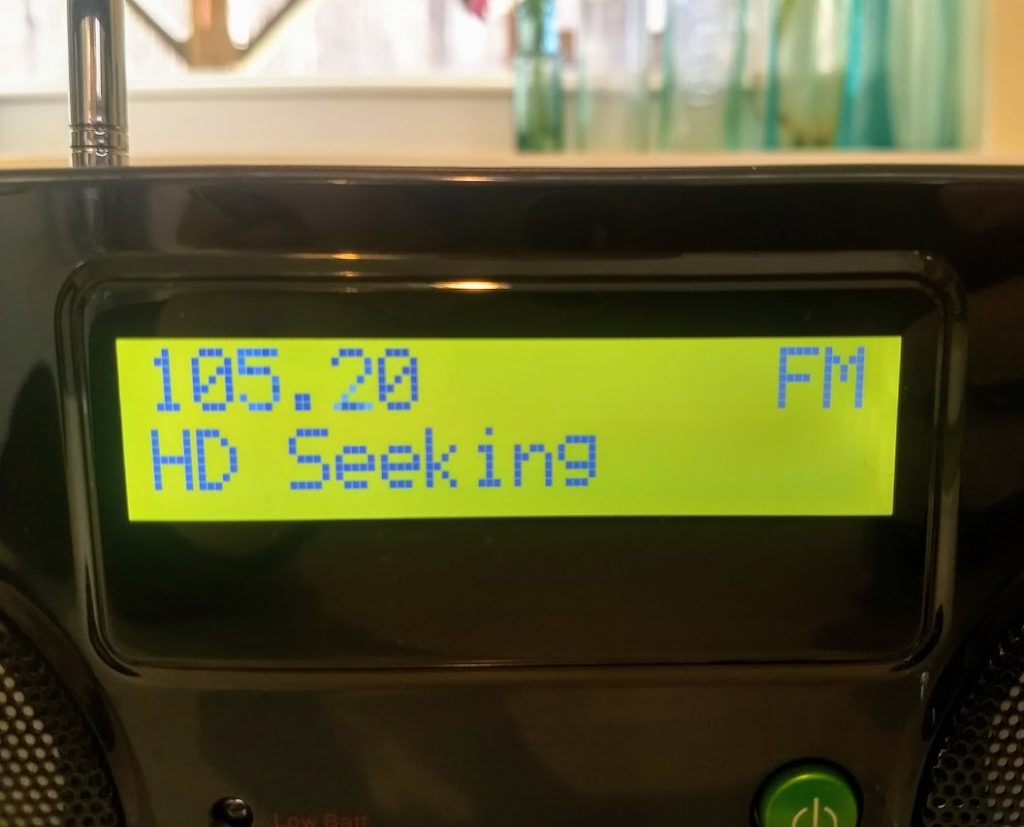
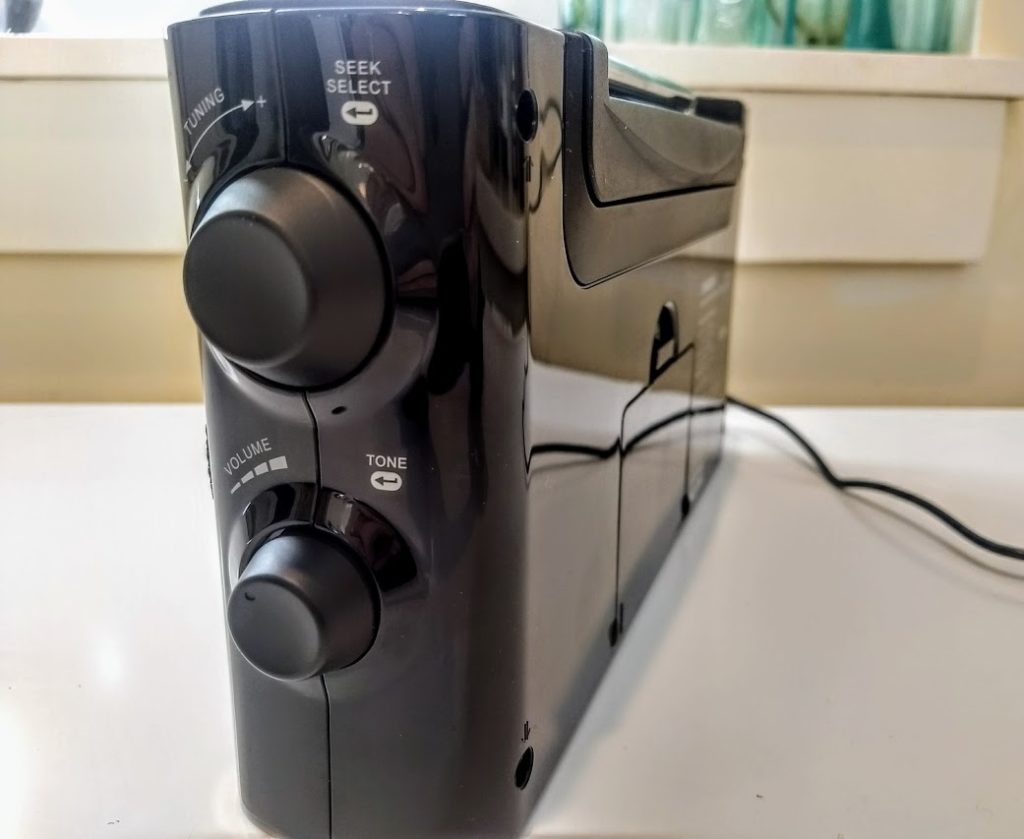
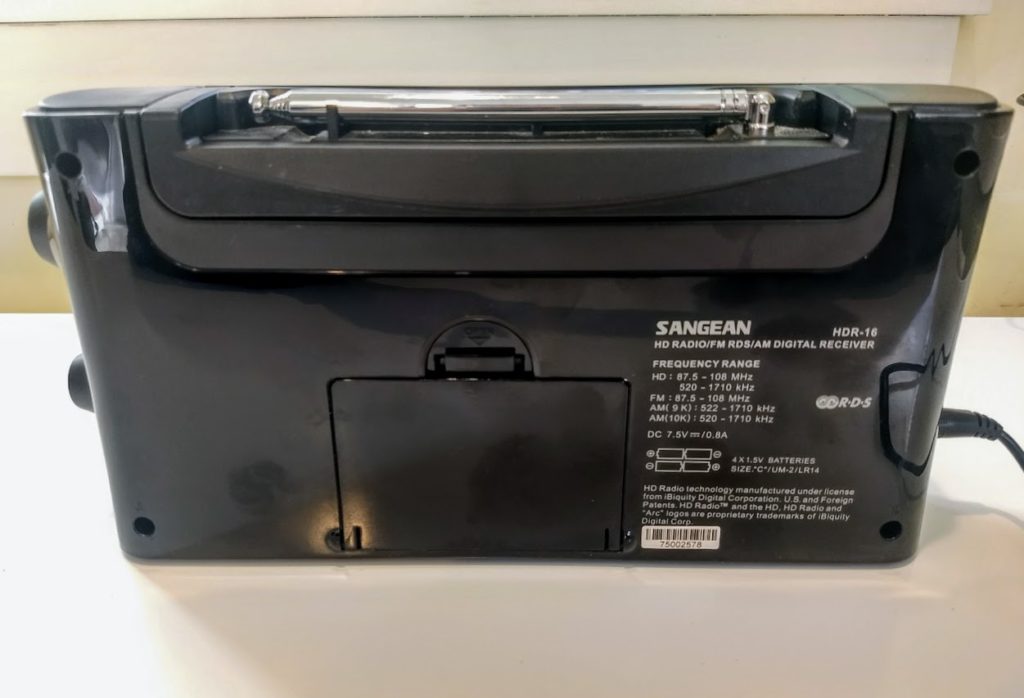
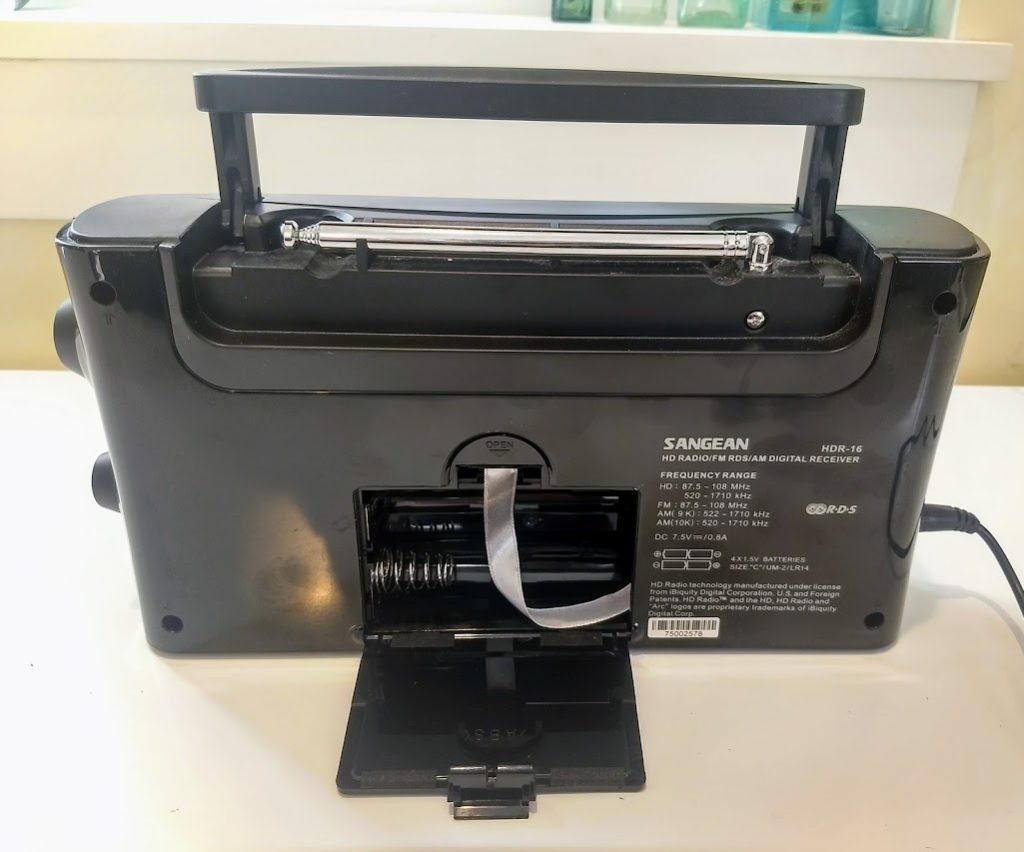
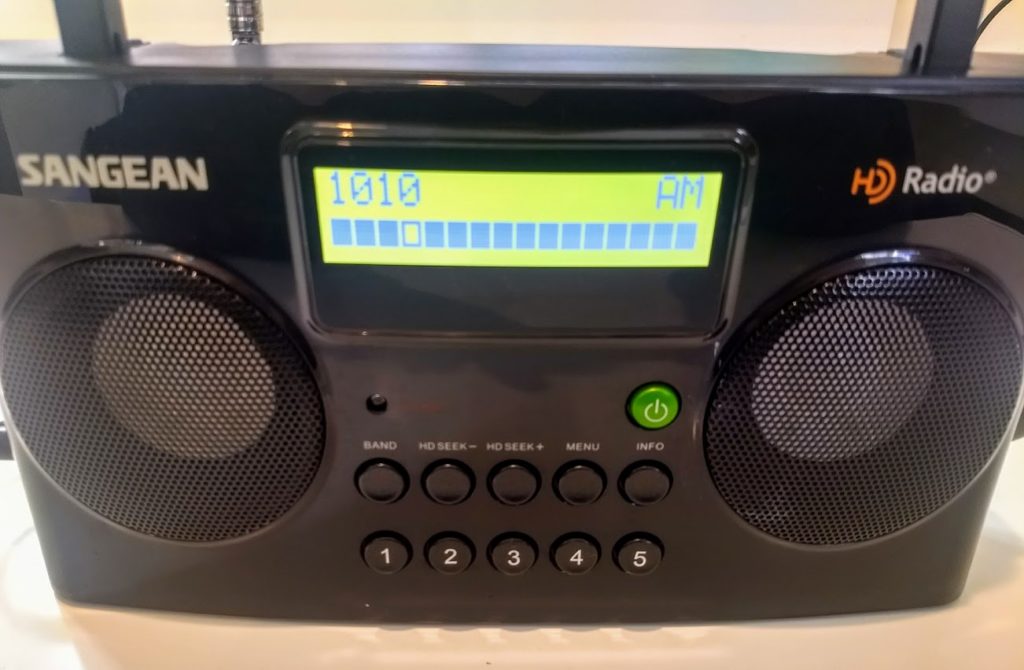
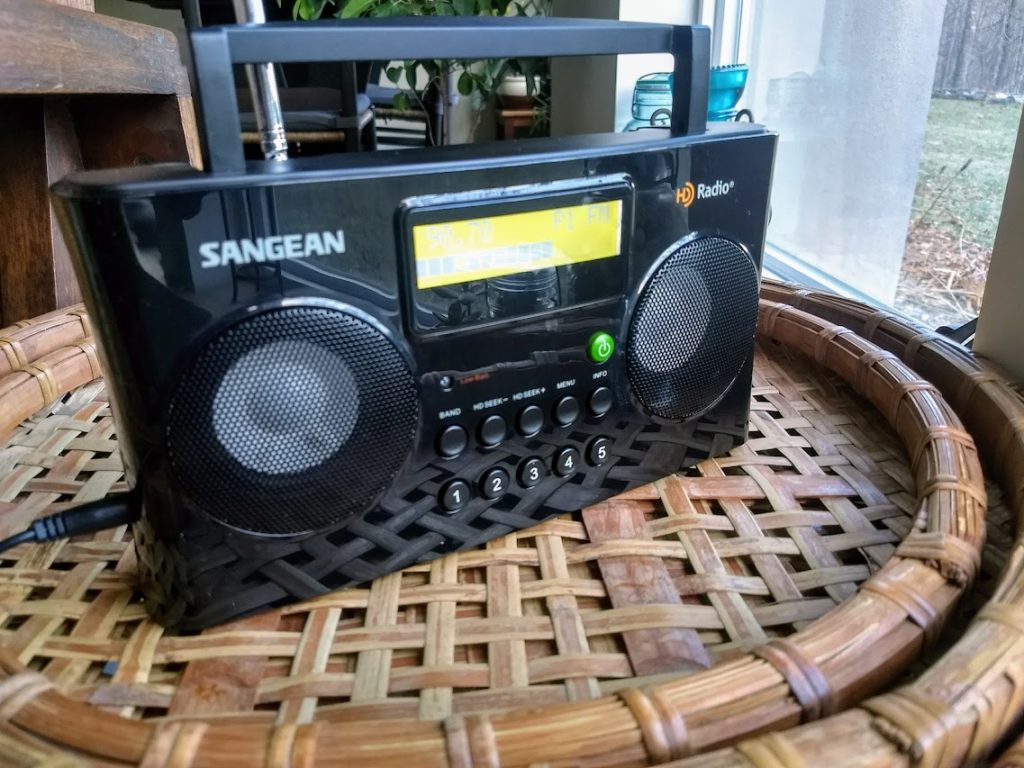
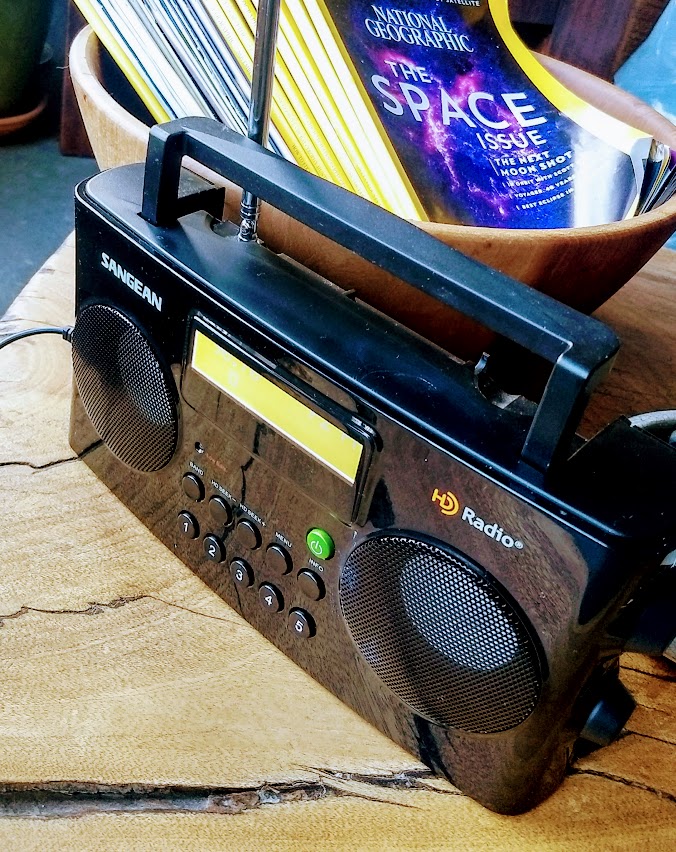
Can someone tell me how to unscrbie from here?
Frank, check at the bottom of any email you signed up to receive. There’ll be an unsubscribe link there.
pease I need help.
I have a Sangean HDR-16 radio and have a question. I just got this radio and was wondering it says it receives emergency alerts but when I try to do the setup like it says in manual to hold down the info button but does not say if radio needs to be on or off. It does not work either way, what am I doing wrong? I would like to get this to work, I would appreciate all your help into this issue. Also, there are other info on the radio and screenshot of its look as well.
Here is the attached manual page 10 is the section to look at for me otherwise all is set except for this, please see all attachments. Also on page 13-14 in the manual, how do I get this to show? Radio on or off and does not work either way.
This radio makes a fantastic vacation or camping companion. It is portable and lightweight, making it simple to take with you wherever you go.
Thank you for sharing this.
Is there a way to keep the power on with out having to push the power button every time
We keep it in the bathroom and want it to come on when we turn on the light
But you have to push the power button
I am in need of buying this radio, but there is the possibility of listening to HD radios from USA in Latin America, specifically in Ecuador with the Sangean HDR-16???? Thanks
lease I need help.
I have a Sangean HDR-16 radio and have a question. I just got this radio and was wondering it says it receive emergency alerts but when I try to do the setup like it says in manual to hold down the info button but does not say if radio needs to be on or off. It does not work either way what am I doing wrong? I would like to get this to work I would appreciate all your help into this issue. Also there are other info on the radio and screen shot of its look as well.
Here is the attached manual page 10 is the section to look at for me otherwise all is set except for this,please see all attachments. Also on page 13-14 in the manual how do I get this to show? Radio on or off and does not work either way.
I’ve had four Sangean PR-D15s, all of which I have (mostly) loved; but none do HD, which I needed for my New York apartment. So I got the HDR-16 for the HD.
See, the biggest advantage for HD on FM is one that is almost never promoted: it cleans up the sound of strong multipath-damaged signals. This is what we have in much of New York City. Where I live there, signals coming off the Empire State Building and 4 Times Square pound and bounce their way through more than 100 blocks of high-rises, plus terrain, on their way to my flat on a low floor at the far north end of the Island. All signals I get are strong, but sound like crap—unless they’re in HD, and one listens with an HD radio. Hence the HDR-16. As a nice bonus, the two AM stations with HD—WCBS/880 and WINS/1010—also sounded great (like FM stations)… until Entercom turned the HD off.
On the down side, it’s a bummer that the display on the HDR-16 is far less clear than the one on the PR-D15. It also lacks the same wide viewing angles.
Analog reception on both AM and FM are close to identical, though I’d give a slight edge to the PR-D15. There is also a sense that corners have been cut with the HDR-16. For example, it uses four batteries instead of six. Not sure why. I can report that my one complaint about the PR-D15 is battery life. You’d think six D cells would last a while… but, alas.
Back to HD on AM for a moment. Most DXers* hate it, because HD signals skirt over adjacent channels. But DXers are way to the right of the decimal point among shares of listeners to any station, and the advantage in sound on AM of HD over analog is like day over night. Most AM-band radio listening today is in cars, and in most of those AM sounds like it’s coming through a pillow. This is due at least partly to crappy receiver design, but there it is. However, most new car radios (especially on better cars) come equipped to get AM HD. I would think that owners like Entercom would promote their HD over competing stations without it. (Oh, and being on an FM’s HD-2, -3 or -4 is like being in radio’s Siberia. I’m in Santa Barbara, right now, where KNX-AM used to come in fine in HD from 90 miles away. I can kinda get it, sometimes, on KRTH/101.1 HD-2, in my wife’s new Camry, if I don’t mind it coming and going in and out of silence.
* I was a DXer for much of my life, so I speak from experience. I logged over 800 stations from within a bike ride of most New York station transmitters in the New Jersey meadowlands, plus over 1000 FMs later from a house in the North Carolina woods outside Chapel Hill. Add to that many dozens of TV stations as well from the same spot, over tropo and E-layer skip, back in the Analog Age.
I just got an HDR-16 from Universal Radio to replace my Grundig YB 400 that must be at least 25 years old. Mainly used the YB as an alarm clock. However the volume control is failing so I need to replace it. Tried cleaning it with tuner cleaner and DEOXIT D5 but those no longer help.
Got the Sangean and have been amazed by the FM tuner. I can get an NPR station (WUOM) in HD that is 39 miles away while indoors. I give the AM and FM receivers an A+. And our house has metal siding and a metal roof.
However I have found what for me is a major flaw. The alarm clock will not work unless the radio is using the external power supply. I need a portable radio to take on road trips and camping that has an alarm clock and can’t always have it plugged in to get that function. I spoke with Sangean and they verified that the radio must be plugged in for the alarm to work. The factory disabled that function because users were complaining about the battery running down when the alarm was enabled.
Any idea how the reception is compared to the RCA Superadio?
I just bought the HDR-16, it arrives today, will see how it is compared to the Superadio (RCA), looking forward to checking it out, thanks for the good review. I wanted this model for the HD radio mainly.
I just received a Sangean HDR-16. It has some changes compared to the reviewed one. The MENU button is now labeled MENU/INFO. The INFO button is now labeled PAGE. It has 20 FM and 20 AM presets. Not sure if anything in the menus has changed. Otherwise the radio looks the same
I have the HDR-16 and would like to know if there is a way to shut off the backlight on the panel. I can’t find anything in Sangean’ manual.
I just purchased the HDR-16, (I haven’t received it yet) I would like to know if I can use the adaptor, and still leave the batteries in it. If I use the adaptor, does it bypass the battery power?
I had a Gigaware HD Radio that was also a dock for an iPod/iPod Touch/iPhone. Aside from using it for music, the main feature that hooked me was HD radio which there are some stations in Memphis that use it. I remember how much a pain it was to use it on AM but FM worked fine and even found out my local NPR station had BBC WS on a subchannel. However it grew out of HD Radio once I discovered internet radio pretty much replaced my need for digital radio.
Despite some rather hilarious objections, e.g. the bright blue LED light, to Sangean’s HDR-18, it’s a fabulous receiver which is even better than the HDR-16. Very few potential buyers are even listening to those rather absurd objections anymore since word of the HDR-18’s superb performance is already out of the bag. I’ve received and decoded numerous HD stations on my HDR-18, both FM and MW, from hundreds to even thousands of miles away, e.g. South Carolina, Canada, and Mexico, during Sporadic-E events.
I use the bright blue light as a nice night-light. 🙂
Fortunately newer products seem to make better choices when adding indicator LEDs, but I highly recommend Light Dims for dealing with the blinding LEDs that were so popular in the last decade or so. Available on Amazon as well: http://www.lightdims.com/
I should add that the Canadian station was NOT HD, but it’s strength certainly would have enabled decoding of HD… I remember hearing a version of KISS’ “Calling Dr. Love” on this station via my HDR-18, an unforgettable experience. 😉
Tom, can you please elaborate more on HDR-18’s better performance in comparison to the HDR-16?
Thanks
If the radio defaults back to the analog main channel audio when the HD2/3/4 drops out, that sounds like a firmware bug or some really bad programming. I’ve used a bunch of different HD radios over the years and never experienced that. Subchannels should just go quiet until the stream recovers, even if it takes 10-15 seconds.
The biggest roadblock to wider HD adoption early on was the low power issue. Many stations have since upgraded so that the digital is on parity with the analog’s 60 dBu or better, but these days there’s still no incentive to really own one because in most major markets, those HD subchannels are being relayed on FM translators. So unless you’re close enough to a city to hear the FM main station but too far to pick up the lower powered translators, the HD subchannel content is not really unique. And since the vast majority of listening is done on analog FM, the HD channels have just basically become glorified program feeds. The exception is, of course, public radio. They still offer the biggest variety of subchannels that aren’t heard elsewhere in analog, in my experience.
Tom, your comment made me pull the HDR-16 out of the box (I had packed it to return to Sangean) and re-check.
You’re right. I’m not sure why I experienced the shift between HD to analog–and I can’t remember which station I had experienced this. I could not get this to happen again today, though, no matter how I manipulated the radio. I’m going to amend the review on this point! Thanks for taking the time to note this. I don’t think I’m crazy (well, many would argue I am–especially my wife and kids) I do think I noticed this behavior because I wrote it in my review notes very early on. I had not revisited it, however, since September.
Anyway, thanks again.
-T
I have the HDR-18 table top version and it is very nice and similar to performance of the HDR-16. The AC adapter too is more quiet than other types of 12V AC adapters.
But when trying to listen to distant stations at night, the not so “on frequency” digital sidebands of local IBOC signals completely obliterate ANY possible weak signal. A local IBOC at 670 kHz will trash 660 and 680 kHz completely. The hash is so strong, it cannot be nulled-out either. This happens at every local IBOC station on the MW dial. IBOC is a very wasteful use of spectrum. I suppose it is a price to pay for compromising with the analog standard.
I do most of my MW listening to long distance stations at night and this seems like a step backwards to me. Long distance listening is being held captive to the mindgame of “local control” that bureaucrats and big corporations love to play for “market share”. People are being slowly cutoff from the rich diversity of listening to something from a different region with different programming (and, more importantly, different ideas of what is possible for programming) over *RADIO*, not the internet.
Obliteration of nearby channels is one reason that MW HD is dying off. Here in the huge radio market of metro NYC, only two such stations persist (WCBS and WINS), and both are already duplicated on FM HD multicast streams anyway. Ironically they are all-news stations which do not even benefit much from a digital stream.
The US FCC dropped the ball on this whole thing. Unwilling or unable to (re)allocate separate spectrum space for digital radio (as other countries do for DAB/DAB+) and not wanting to obsolete the millions of analog radios, they made a very imperfect compromise.
Like it or not, HD Radio is not going away, and with that awareness I’ve come to embrace its benefits and treat it as an enhanced listening experience.
Agree with your sentiments. I would add that wholesale digitizing the existing MW band would probably either bankrupt many stations or alienate many listeners not willing to convert. The compromise played right into the hands of the iBiquity format that had critics who were ignored.
It is my subjective impression, but it seems like digital high fidelity broadcasting at these lower frequencies is problematic to decode consistently to avoid dropouts, even at high power. Seems a waste at MW. Perhaps FM will adopt it better.
I will enjoy what I can while MW is still available. There are still some very fun stations with unique regional programming to hear. Digitizing this medium just seems to homogenize everything dumbing everyone down in the process, not make it more diverse and rich!
In reference to the problem with signal strength, on FM, the HD Radio (silly name, btw) signal is transmitted at a much lower power level than analog. As much as 10 to 14% of the analog power. This was set to prevent any interference with either the home station’s or neighboring station’s analog signal. So receiving an HD station’s analog signal is no assurance that you’ll get the HD signal, especially at fringe. I always recommend if you’re any further than 15-25 miles from the station’s transmitter, you use an external antenna. You’ll be surprised what you’ll get.
Indeed! That’s why I was so amazed that the HDR-16 could even decode WFAE HD2–I would have never expected good copy from such a fringe station. I believe even a simple external antenna would make all of the difference.
Thanks for your comment!
-T
Great review Thomas! Down here in Australia I listen every single day to USA HD Stations. In fact, I listen to USA HD radio more than any other type of radio including shortwave! I am forced to listen via their streams on various Internet radios as I am far outside of their usual RF HD broadcast area, but with smart DNS proxy (most USA radio streams are geofenced to USA listeners only) I really enjoy the wide range of HD radio offerings. Fave stations playing aways at my place are Punk Tacos, Smells Like The 90s and Alt Radio which are all HD channels piggybacked onto stations in the iHeart network. Another fave is KROQ-HD (KROQ timeshift their broadcasts back to the 80s on their HD channel) from LA. There is so much great content on HD, and so few commercials that it rivals the Sirius XM content for me. If I lived in the USA I would have the HD option on every radio scatted around me!
Of course you browse the pastures of US HD radio from Australia! You’re Mark Fahey–that’s what you do! 🙂
You have a very good point, though: I, too, often listen to HD radio stations via WiFi radio. So many stations stream them along with their analog content.
I’ve tuned through the HD landscape in larger cities and the variety is simply amazing. Even if you prefer good ole analog radio, HD alternative sometimes feature unexpected and welcome formats–sometimes even smacking of community radio. I’ve even happened upon HD stations that had very little advertising or commercial breaks.
Thanks for your perspective, Mark.
-T